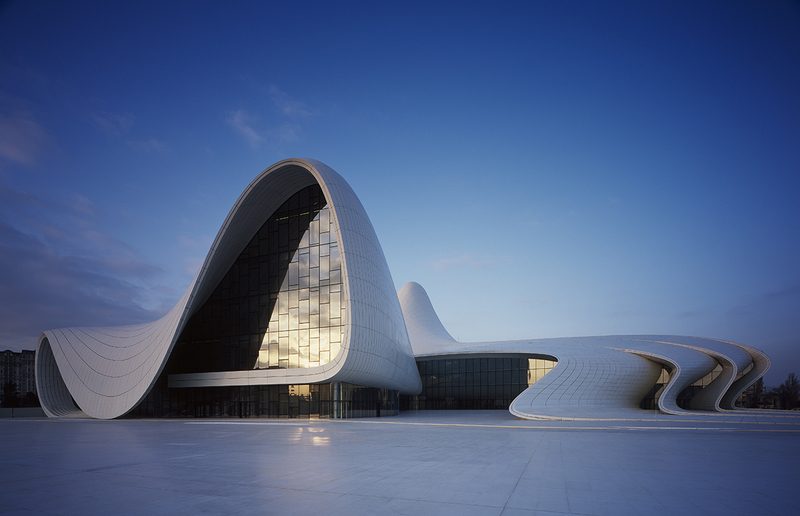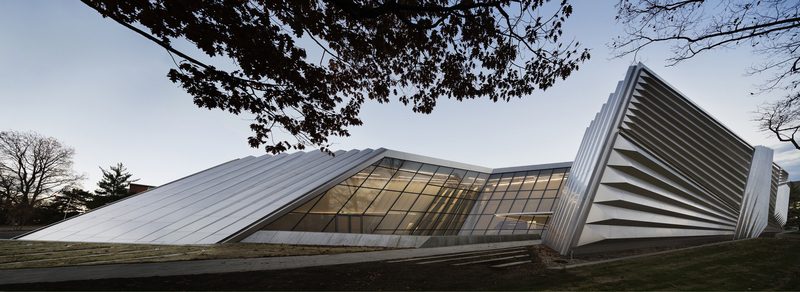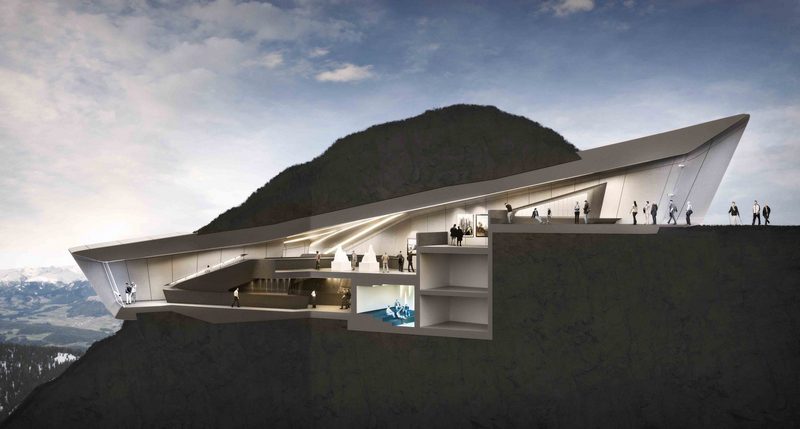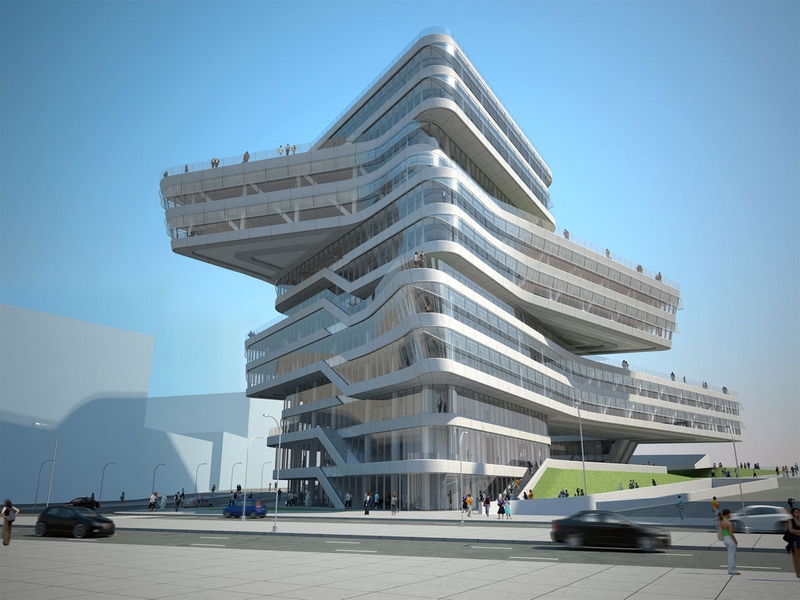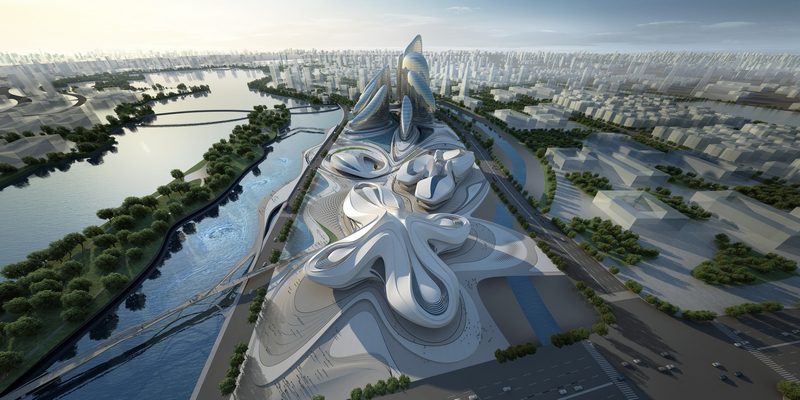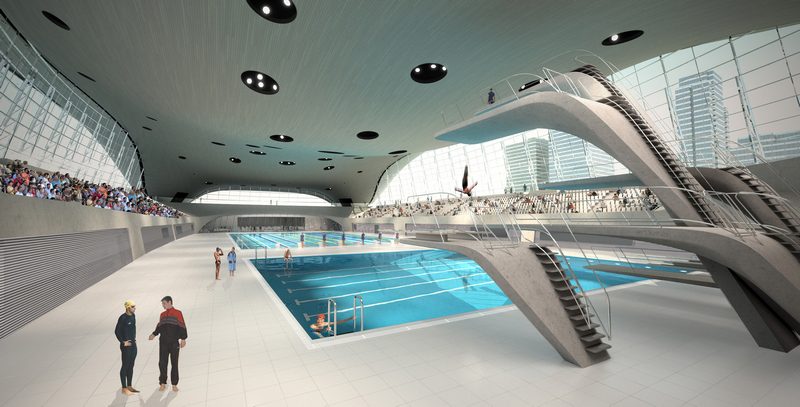ARCHITECTURE: Zaha Hadid
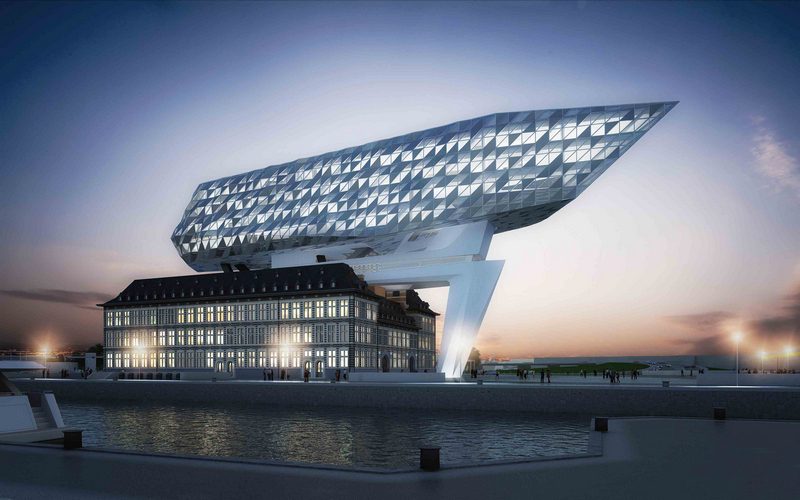 The Iraqi architect Zaha Hadid, born in Bagdad (31/10/1950-31/3/2016) is a representative of the school of deconstruction. She read mathematics at the American University of Beirut before moving to study at the Architectural Association School of Architecture in London. After graduating she worked for her former professors, the Greek Elias Zengelis and the Dutchman Rem Khoolhaas, at the OMA (-Office for Metropolitan Architecture), she became a partner in 1977. In 1980, she opened her own office in London, where while winning one architectural competition behind the other, there was building for over twenty years.
The Iraqi architect Zaha Hadid, born in Bagdad (31/10/1950-31/3/2016) is a representative of the school of deconstruction. She read mathematics at the American University of Beirut before moving to study at the Architectural Association School of Architecture in London. After graduating she worked for her former professors, the Greek Elias Zengelis and the Dutchman Rem Khoolhaas, at the OMA (-Office for Metropolitan Architecture), she became a partner in 1977. In 1980, she opened her own office in London, where while winning one architectural competition behind the other, there was building for over twenty years.
By Efi Michalarou
 In 2002 she won the international design competition for the design of the new general city plan of Singapore. While in 2004 was the first woman in history who got the Pritzker Prize and in 2014, received from the London Design Museum, the First Prize for the design of a building in Azerbaijan, following widespread criticism of the award, on human rights grounds. The buildings of Hadid not obey any principle of static structure, but always she trying to create a continuously evolving movement, where there is an endless circular course that makes her architecture look like a “river”. A sequence of points and bridged volumes of surfaces flowing into one another, continuously collating the meaning of tension with the meaning of change. The concept of flow in the spaces is an important issue in architecture of Zaha Hadid, something that she is trying to solve, giving enormous importance. The attempt for interpretation of fixed shapes such as squares and circles are widespread and has added new vocabulary, creating buildings that cause curiosity and through the movement gain greater interest. The perspective also essential component of each architecture in her work plays a key role, since is dictated from the forms she uses. While the abstraction is directly related to the degradation that, characterizes her work. Abstraction implies the avoidance of familiar and stereotyping typologies. Reconstituted functions of the space, the relationship inside – out through limits, fields volumes, levels and cuts. To maintain the non-partisan spirit of abstraction in buildings, she avoids designing the details directly that indicate their functionalism. Her objectives is not to define the behavior of habitation instead allows the user to discover himself the space and to give it personal meaning. The curves in architecture are used to calm the viewer’s eye, here and serve the basic form of Hadid’s design. The curve has its own flow and refers to the feminine nature and tenderness. Is the line of emotion and of the spontaneous expression… which in this case, we find it to the full… She died from a heart attack on while in hospital in Miami, where she was being treated for bronchitis.
In 2002 she won the international design competition for the design of the new general city plan of Singapore. While in 2004 was the first woman in history who got the Pritzker Prize and in 2014, received from the London Design Museum, the First Prize for the design of a building in Azerbaijan, following widespread criticism of the award, on human rights grounds. The buildings of Hadid not obey any principle of static structure, but always she trying to create a continuously evolving movement, where there is an endless circular course that makes her architecture look like a “river”. A sequence of points and bridged volumes of surfaces flowing into one another, continuously collating the meaning of tension with the meaning of change. The concept of flow in the spaces is an important issue in architecture of Zaha Hadid, something that she is trying to solve, giving enormous importance. The attempt for interpretation of fixed shapes such as squares and circles are widespread and has added new vocabulary, creating buildings that cause curiosity and through the movement gain greater interest. The perspective also essential component of each architecture in her work plays a key role, since is dictated from the forms she uses. While the abstraction is directly related to the degradation that, characterizes her work. Abstraction implies the avoidance of familiar and stereotyping typologies. Reconstituted functions of the space, the relationship inside – out through limits, fields volumes, levels and cuts. To maintain the non-partisan spirit of abstraction in buildings, she avoids designing the details directly that indicate their functionalism. Her objectives is not to define the behavior of habitation instead allows the user to discover himself the space and to give it personal meaning. The curves in architecture are used to calm the viewer’s eye, here and serve the basic form of Hadid’s design. The curve has its own flow and refers to the feminine nature and tenderness. Is the line of emotion and of the spontaneous expression… which in this case, we find it to the full… She died from a heart attack on while in hospital in Miami, where she was being treated for bronchitis.

